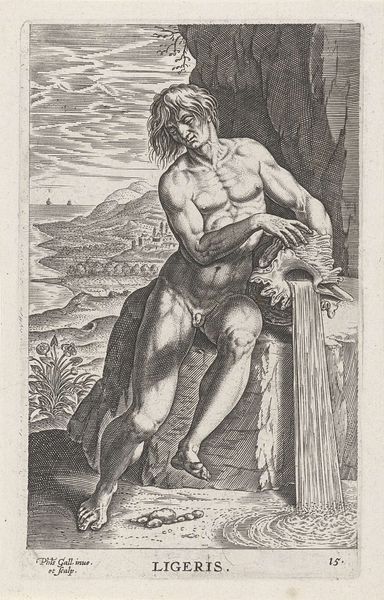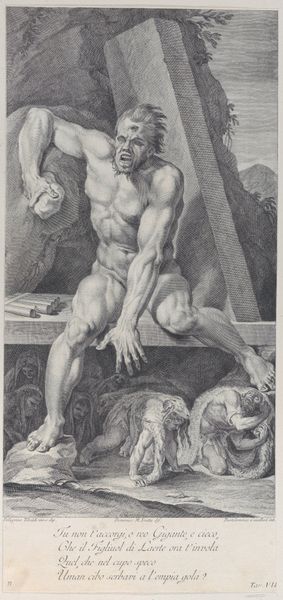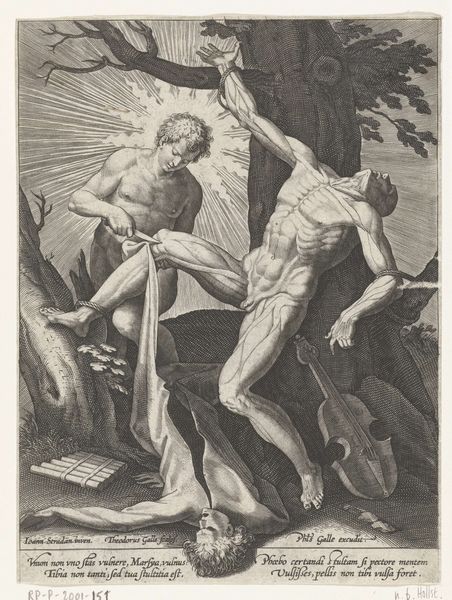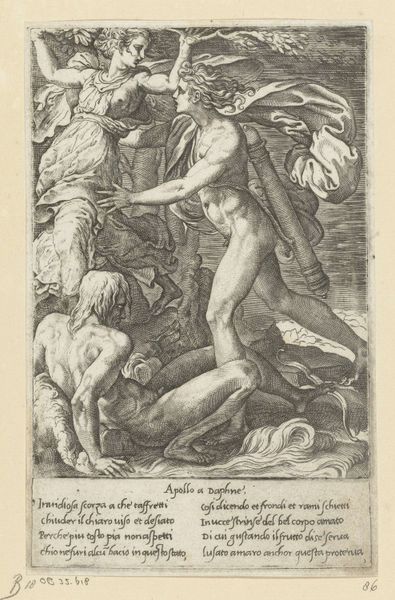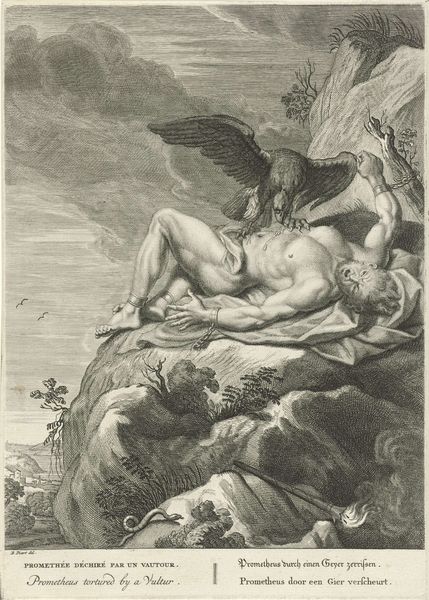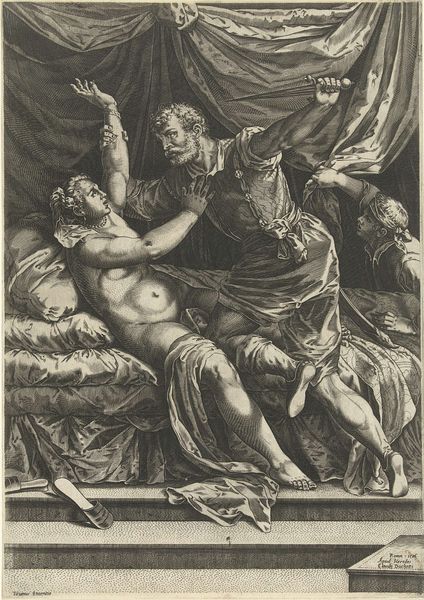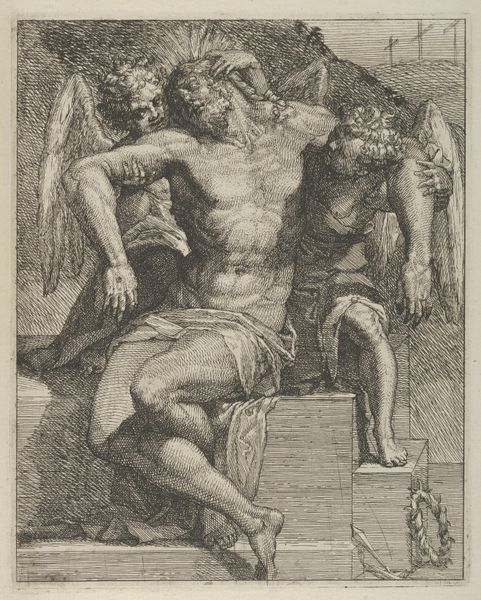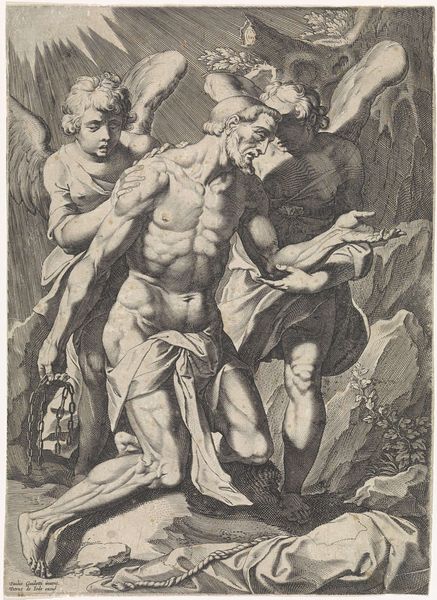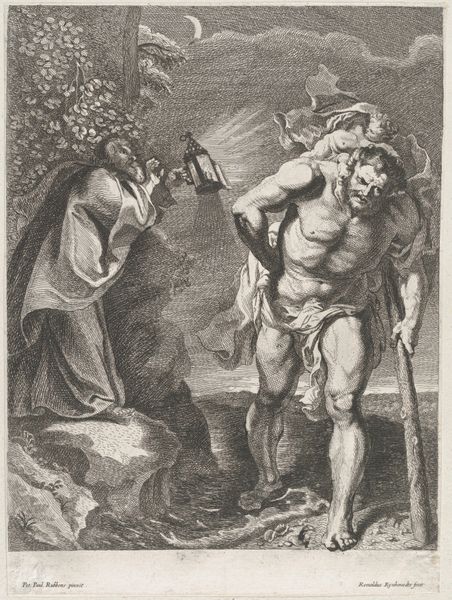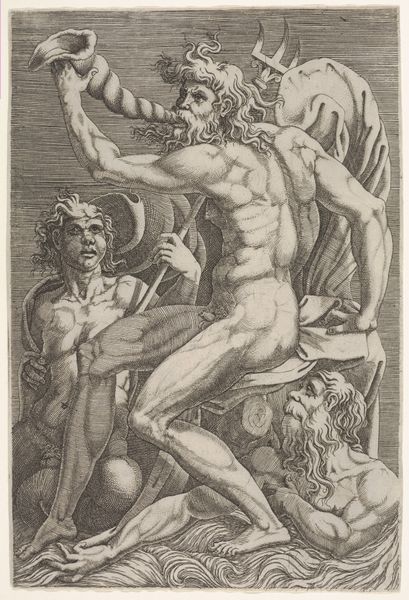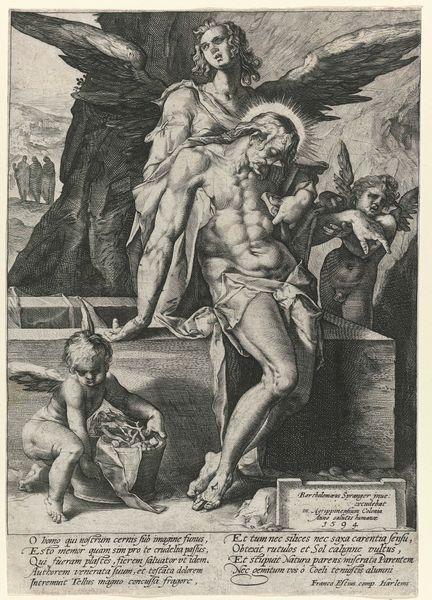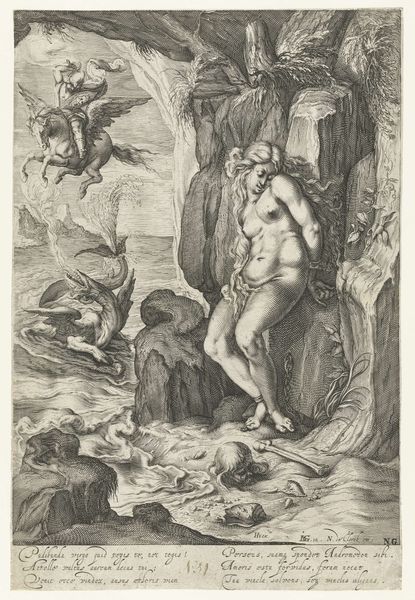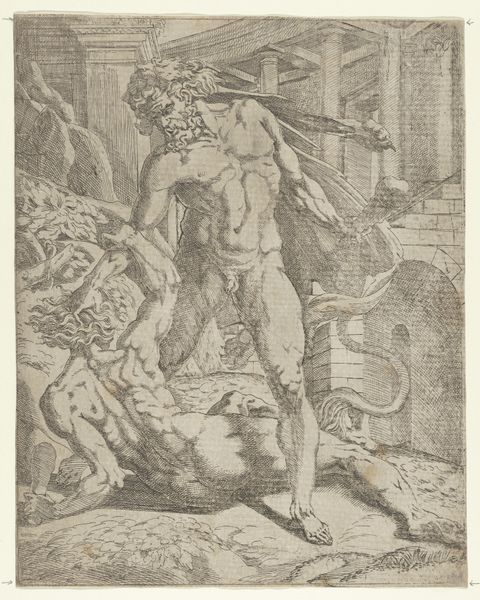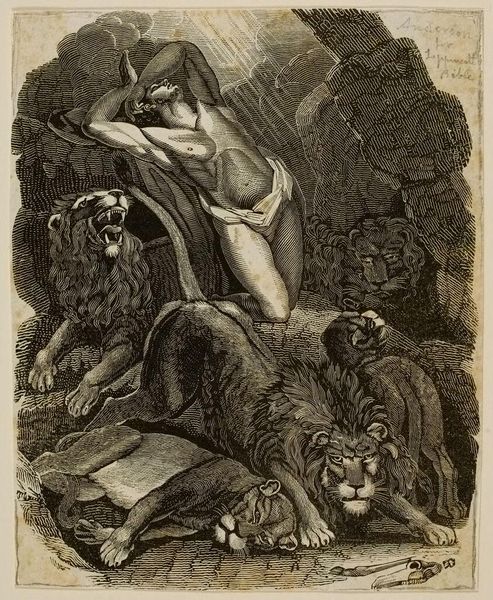
print, engraving
#
baroque
# print
#
charcoal drawing
#
figuration
#
form
#
mythology
#
line
#
history-painting
#
nude
#
engraving
Dimensions: height 255 mm, width 185 mm
Copyright: Rijks Museum: Open Domain
Cornelis Bloemaert created this print, titled Prometheus, sometime between 1603 and 1684, using an engraving technique. Engraving is an intaglio printmaking process, requiring immense skill and labor. The artist uses a tool called a burin to carve lines directly into a metal plate, usually copper. The depth and thickness of these lines determine how the ink will sit on the paper. Bloemaert's mastery is evident in the fine, precise lines that create a dramatic scene of Prometheus chained to a rock, his liver being devoured by an eagle. The process imbues the image with social significance. The labor-intensive nature of engraving means that prints were luxury items, accessible to a limited audience. This image, depicting the suffering of Prometheus for defying the gods and giving fire to humanity, would have resonated with a privileged class, perhaps as a reminder of the consequences of challenging authority, or the necessity of social hierarchies. Ultimately, understanding the meticulous craft of engraving deepens our appreciation for Bloemaert’s artwork, acknowledging the intersection of technique, artistry, and social context.
Comments
No comments
Be the first to comment and join the conversation on the ultimate creative platform.
